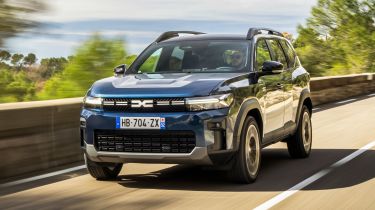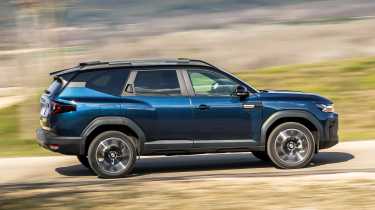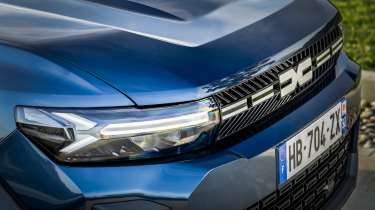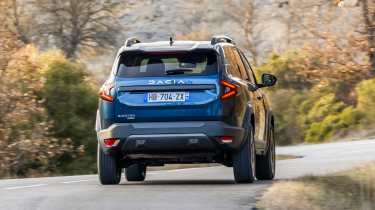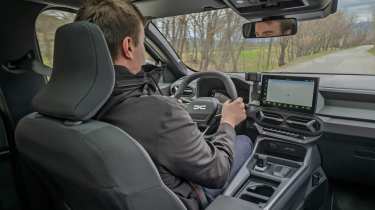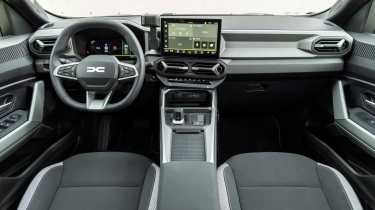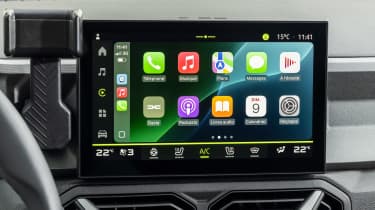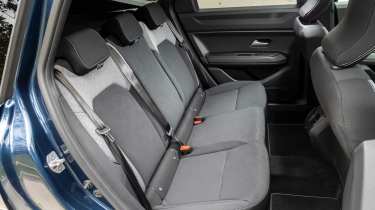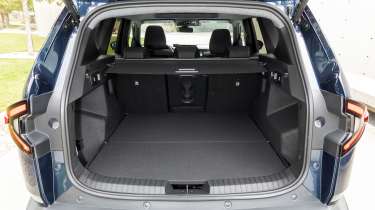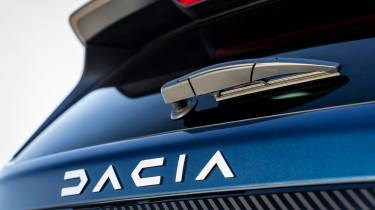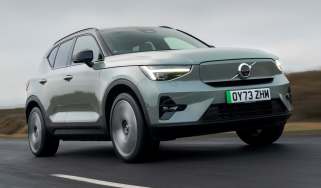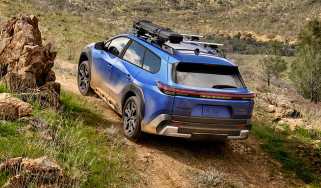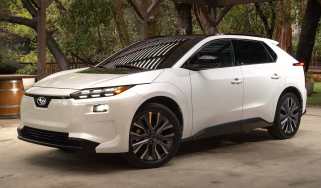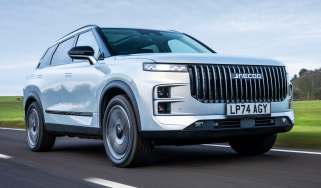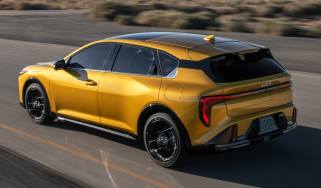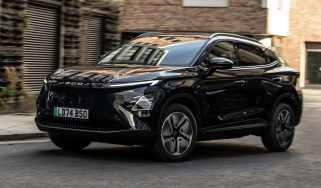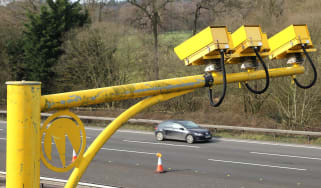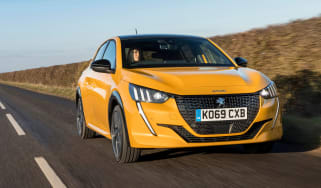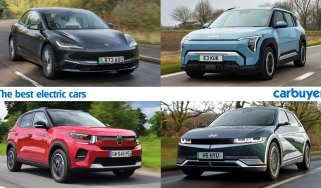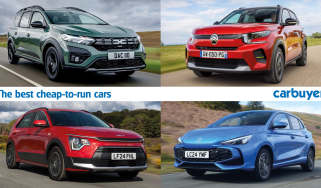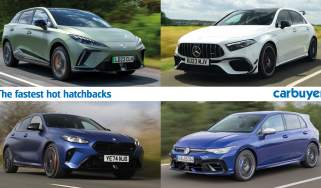Dacia Bigster review – a bigger-booted Duster
“The Dacia Bigster takes the Dacia Duster’s tried-and-tested recipe and adds more space and sophistication"
Pros
- Economical
- Comfortable
- Well built
Cons
- Some cheap interior materials
- The engine can be loud at times
Verdict – is the Dacia Bigster a good car?
The Dacia Bigster is a welcome addition to the budget brand’s line-up, and is a compelling package that takes everything we like about the Duster and adds even more space and a huge boot. Sure, it’s not particularly inspiring to drive, but it’s at least composed and comfortable, and no matter which version you go for, it’s economical too. The thing is, if you’re concerned about safety, it’s likely to be no safer than the Duster with its three-star Euro NCAP rating in a crash.
Dacia Bigster models, specs and alternatives
It’s been impressive to witness how quickly Dacia has established itself in the UK in the last decade or so, and finally its line-up gets a large SUV offering, called the Bigster.
The Dacia Bigster might sound like it was named after a poll, a la ‘Boaty McBoatface’, but at least it aims to do what it says on the tin. It’s essentially a larger version of the Duster SUV with even more practicality on offer, looking to coax buyers away from mid-size offerings like the Nissan Qashqai, Skoda Karoq and Kia Sportage.
The Bigster starts at just under £25,000, putting it around the same price as a higher-spec Duster SUV. That also puts it head to head with the MG HS, and makes it much cheaper than the Qashqai and Sportage, which now start around the £30,000 mark.
While the rest of Dacia’s range starts with a spartan ‘Essential’ trim level, the Bigster actually starts from Expression, which gets a 10.1-inch infotainment screen with Android Auto and Apple CarPlay as standard, plus a seven-inch digital gauge cluster in front of the driver. There’s also dual-zone climate control, front and rear parking sensors, a reversing camera and 17-inch alloys as well as the novel ‘YouClip’ anchor points allowing you to attach accessories such as cup holders, phone holders and bags.
Above Expression there are two more trim levels: Journey and Extreme. These come with extras like larger alloy wheels and added convenience features, but in reality the Expression is well equipped enough for most, making its low starting price even more enticing.
The Bigster comes with a choice of three powertrains, but all are at least mild-hybrid assisted, starting with a petrol-powered 1.2-litre TCe 140 engine with front wheel drive and a manual gearbox. Above this is a four-wheel drive version, though this is strangely slightly less powerful, badged the TCe 130 4x4. There’s a full-hybrid version of the Bigster, too, which will be the most economical of the line-up and has an automatic gearbox making it more accessible to a wider audience.
| Trim levels | Power options |
|
|
MPG, running costs & CO2 emissions
| Pros | Cons |
|
|
The Dacia Bigster’s petrol engine range is mild-hybrid assisted as standard, while there’s a full hybrid version at the top of the line-up for even better efficiency. LPG fans might be a bit disappointed, because this time around that’s not an option like it has been on some Dacia models in the past.
The great news is that the fully hybrid version is lighter than many other hybrid SUVs on the market, and that just serves to make it even more efficient and frugal. You can expect up to over 60mpg in the full hybrid, which your wallet will thank you for.
In fact, the Bigster is rather light no matter which version you go for, so even the mild-hybrid assisted models are very economical. The entry-level TCe 140 can return mpg in the early 50s, while the 130 4x4 suffers somewhat due to the all-wheel drive system, with fuel economy in the high 40s.
| Model | Fuel economy | CO2 emissions |
| TCe 140 | 51.4mpg | 122g/km |
| TCe 130 4x4 | 46mpg | 134g/km |
| Full hybrid 155 | 60.1mpg | 105g/km |
How efficient is the Dacia Bigster in the real world?
When we tested the Dacia Bigster Hybrid 155, we actually managed to improve on its 60.1mpg efficiency figure, achieving 62.2mpg on a journey with lots of cruising.
How much will the Dacia Bigster cost in tax?
The Dacia Bigster will cost you the standard rate in VED (Road Tax) as hybrids will no longer benefit from the £10 annual discount from April 2025. Company-car buyers will be best off with the Full hybrid 155, although Benefit-in-Kind (BiK) rates won’t be as low as a plug-in hybrid or fully-electric car, so it’s probably best to look elsewhere if you’re considering a Bigster on business.
What will the Dacia Bigster cost to insure?
Official insurance groupings for the Dacia Bigster are yet to be announced, but it’s worth considering that the Duster sits in group 24. We’d expect the Bigster to sit in higher groups than this given that it’s a larger, more highly-specced car, though the rival MG HS actually sits in groups 24 to 27, putting it in the same ballpark as the smaller Duster.
Engines, drive & performance
| Pros | Cons |
|
|
We tested the Bigster in Hybrid 155 guise, which is the first time we’ve tested that specific powertrain. The transition between regenerative braking – which harvests energy from the car slowing down and puts it back into the battery – and the conventional mechanical brakes was very seamless.
While it may be the most powerful version of the Bigster, the focus here is not outright performance, but smooth power delivery. In that sense, the hybrid Bigster is very successful, and combined with a soft suspension setup it proves to be a rather comfortable cruiser.
Is the Dacia Bigster good to drive in town?
The good news is that the Bigster’s steering is light, and it has a tight turning circle, so it’s easy to manoeuvre despite its size. Because it sits high and has a soft suspension setup, the Bigster also does an impressive job of soaking up potholes and speedbumps.
Is the Dacia Bigster good to drive on long journeys?
The Dacia Bigster feels well up to the task of long motorway driving stints where it feels stable, with well weighted steering that doesn’t upset its composure when changing lanes. The suspension setup will smooth out imperfections well without rattling the occupants inside – more so than that of the Duster. The brand has even installed a thicker windscreen which keeps road and wind noise to a minimum, although the noise of the petrol engine still penetrates the cabin more than it ought to.
Is the Dacia Bigster good to drive on B-roads?
The Bigster isn’t the sort of car you’d take for a B-road blast, but it never pretends to be, either. What does matter is that it feels secure and composed at least, so it won’t feel daunting to drive on this sort of road. The steering is well weighted and although there’s some body roll, it’s not as unkempt as some SUVs can be unless you push it unduly hard. Stick to a leisurely driving style and the Dacia Bigster is good to drive, even if it’s not the most exciting.
Petrol models
The Dacia Bigster is based on the same platform as the Duster and gets a similar range of engines to that car, too. There are two mild-hybrid 1.2-litre petrol engines, though the base 138bhp TCe 140 is around 10bhp more powerful than the TCe 130 in the Duster. For added grip there’s a TCe 130 4x4 version with 128bhp and all-wheel drive. Both of these get six-speed manual gearboxes, while you’ll have to go for the full hybrid if you want an automatic. The 4x4 gets added drive modes including Auto, Eco, Off-Road, Mud/Sand and Snow, for when the going gets tough – while we’ve not tested this in the Bigster, the same system is used in the Duster, which we’re confident will mean it can keep up with rival off-roaders just as well.
| Model | Power | 0-62mph | Top speed |
| 1.2-litre TCe 140 | 138bhp | 9.8 seconds | 112mph |
| 1.2-litre TCe 130 4x4 | 128bhp | 11.2 seconds | 112mph |
Hybrid models
The Dacia Bigster also comes with the option of a hybrid called the Full Hybrid 155, which uses a 1.8-litre four-cylinder petrol engine and an electric motor, plus a six-speed automatic gearbox. It’s the most powerful engine option with 153bhp, as well as being the most efficient, and its application in the Bigster is the first time this specific powertrain has been used by Renault Group, the brand’s parent company.
| Model | Power | 0-62mph | Top speed |
| Full hybrid 155 | 153bhp | 9.7 seconds | 112mph |
Interior & comfort
| Pros | Cons |
|
|
When buying a car from a budget brand like Dacia, the place you’d expect to find evidence of cutbacks is the interior. The Bigster’s interior design is the same as that of the Duster, and while it’s true that the material choices aren’t the most premium, everything feels solid and well put together. We reckon it should prove durable in the long run, which is what families buying a car like this will count on.
One thing we appreciate is how Dacia has incorporated many different textures and finishes to liven up the cabin a bit, so it’s not as drab as it might otherwise be. The light grey headlining brings an airiness to the cabin, as does the panoramic roof on top-spec Extreme models.
Is the Dacia Bigster’s infotainment and sat-nav system easy to use?
While the Dacia Duster gets a seven-inch infotainment screen as standard, the Bigster’s is 10.1 inches in size across the range. We like that it’s angled towards the driver, making it easier to use. The software is Dacia’s latest, and though it’s not got the same breadth of intricacy as other infotainment systems, we like the simple menu layout which makes it easier to navigate on the move.
The system’s graphics are sharp, and it’s responsive, although the built-in sat nav was a little laggy, which made it frustrating to use. The thing is, though, we’d just stick to using Apple CarPlay and Android Auto in any case, and all versions of the Bigster come with those as standard.
The driver’s display is fairly basic, although we like the fact that the sat nav can be displayed here, making it easy to keep track of where you’re going without looking away from the road too often.
Key features | |
|
Expression
|
Journey (Expression plus…)
|
|
Extreme (Journey plus…)
| |
Boot space, practicality & dimensions
| Pros | Cons |
|
|
One of the most obvious reasons you’d buy the Dacia Bigster over the Duster is for the extra space. The key to the Bigster’s appeal against rivals is also that it’s more spacious for less, too. The interior of the Bigster is noticeably more roomy than that of the Duster, but there’s unfortunately no seven-seater option – for that you’d have to go with the Dacia Jogger MPV or a rival SUV such as the Citroen C3 Aircross or Vauxhall Frontera.
Headroom, legroom and footroom is plentiful in the Dacia Bigster, too. Because the Bigster’s window line isn’t too high, there’s an airiness to the cabin, too. There are integrated ISOFIX points on the outer rear seats, which will make child seats easier to install.
| Size comparison | |||
| Model | Length | Width | Height |
| Dacia Bigster | 4,570mm | 1,810mm | 1,710mm |
| MG HS | 4,655mm | 1,890mm | 1,663mm |
| Kia Sportage | 4,515mm | 1,865mm | 1,650mm |
| Nissan Qashqai | 4,425mm | 1,835mm | 1,625mm |
Does the Dacia Bigster have a big boot?
The boot is one of the areas where the Bigster has the biggest edge over its smaller Duster counterpart. It measures a cavernous 677 litres in the entry-level petrol car, although the 4x4 version and Hybrid 155 versions have 614 or 612, respectively, due to the extra gubbins underneath the car that rob some of that capacity. In any case the boot is very large and trumps that of the MG HS with 507 litres and the Kia Sportage with 587 litres
| Boot space comparison | |
| Model | Boot space |
| Dacia Bigster | 677 litres |
| MG HS | 507 litres |
| Kia Sportage | 587 litres |
| Nissan Qashqai | 504 litres |
Reliability & safety
| Pros | Cons |
|
|
Dacia isn’t a particularly high performer in the Driver Power customer satisfaction survey, but it regularly performs better than parent company Renault. In 2024 Dacia came in 22nd out of 32 manufacturers, while Renault placed in a lowly 28th. Reliability seems to be strong, with a lower-than-average 20.8% of Dacia owners reporting an issue with their car in the first year of ownership. Rival budget brand MG fares much worse, coming dead last for customer satisfaction, with 28.1% of owners reporting an issue.
How safe is the Dacia Bigster?
The Dacia Bigster is yet to be crash-tested by Euro NCAP, but its sibling the Duster achieved a three-star rating in July 2024, which is rather disappointing. Dacia’s USP isn’t safety, but value for money, although there are lots of safety assistance systems on the Bigster, including lane-keeping assist, traffic sign recognition, driver attention warning, emergency call system and advanced emergency braking with pedestrian, cyclist and motorcycle detection.
Worryingly, though, while the closely-related Duster fared worst in the safety assist category with just 57%, it still didn’t perform particularly well elsewhere, with scores of just 70% and 60% in the adult occupant and vulnerable road user protection categories. Child occupant protection was rated at 84%, which isn’t terrible.
Should you buy a Dacia Bigster?
We think the Dacia Bigster is a welcome addition to the budget brand’s range, expanding on everything we like about the Duster and adding even more practicality that keeps it competitive against other mid-size SUV rivals.
There’s just so much value for money with the Bigster, and while it may not be the best SUV to drive and isn’t the most premium, it’s comfortable, powerful enough for the vast majority of buyers and offers a good level of comfort that’s actually more impressive than that of its smaller sibling.
What is the best Dacia Bigster for low running costs?
The Dacia Bigster you should go for if you want the lowest running costs is the Hybrid 155, because it can return over 60mpg. It’s also the most powerful model, so you don’t necessarily have to skimp on performance to enjoy the lower fuel bill.
Dacia Bigster alternatives
The Dacia Bigster’s pricing and size puts it up against a mix of rivals. The most obvious mid-size SUV rival is the Nissan Qashqai, though other budget options include the MG HS, or the Citroen C3 Aircross and Vauxhall Frontera, both of which also offer seven-seater options, while the Bigster does not.
How we tested the Dacia Bigster
We tested the Dacia Bigster in left-hand drive configuration in mainland Europe in March 2025 in Hybrid 155 guise.
